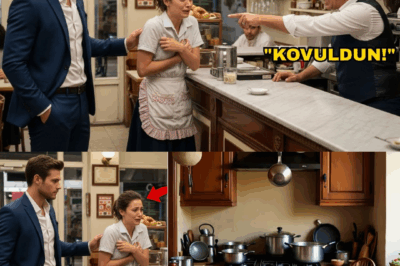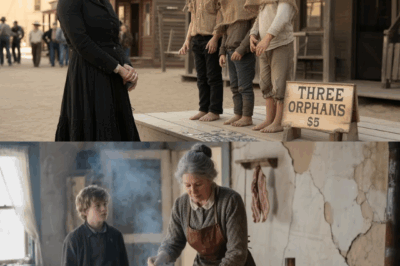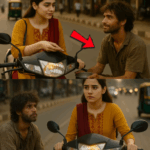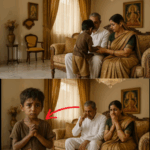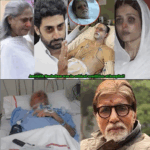Indian Student Shot Dead In US | Indian Techie Shot Dead In US, Family Alleges Racial Harassment
In early September 2025, a situation arose that has stirred grief, anger, and demand for clarity: Mohammed Nizamuddin, a tech professional originally from Telangana, India, was fatally shot by police in Santa Clara, California. What makes his story particularly painful—and tragically perhaps, all too familiar—are the claims and allegations surrounding his death: that he was a victim of racial harassment, discrimination, and bias, even before the moment of tragedy. This review aims to lay out what is known, examine the conflicting narratives, reflect on what this event reveals about power, trust, and the immigrant experience, and consider what justice might look like.
Background: Who Was Mohammed Nizamuddin
Mohammed Nizamuddin hailed from Mahbubnagar, Telangana. He pursued higher education: a Master’s in Computer Science from a college in Florida, after finishing a B.Tech in Electronics & Communications. The Indian Express+2The Financial Express+2 Over time, he worked with tech firms including EPAM Systems and had also been employed via projects connected to Google. The Indian Express+2Business Standard+2
Family and friends describe him as relatively quiet, devout, and someone who kept to himself. Yet, in recent times before his death, he had become vocal about the struggles he felt he faced in the U.S.: alleged racial discrimination, racial harassment, workplace issues like wrongful termination, wage discrepancies, even more serious claims like food poisoning and eviction. mint+2www.ndtv.com+2 Notably, these allegations were made in a public LinkedIn post he wrote just days before his fatal encounter with police. mint+2www.ndtv.com+2
What the Official Narrative States
According to police reports and statements from the Santa Clara Police Department:
On September 3, a 911 call was made reporting a stabbing inside a residence. A roommate allegedly reported being stabbed, and officers were dispatched. www.ndtv.com+1
When officers arrived, they found Nizamuddin inside the residence, holding a knife, and allegedly pinning down his injured roommate. www.ndtv.com+1
Because Nizamuddin purportedly did not comply with police orders, officers fired, and he was shot. He was taken to a local hospital where he later died. His roommate survived with injuries. The Financial Express+2www.ndtv.com+2
The incident is under joint investigation by Santa Clara Police and the District Attorney’s office. www.ndtv.com+1
What the Family Alleges: A Different Narrative
Nizamuddin’s family sharply disputes key aspects of the official version of events, and assert that his history of discrimination and harassment must be part of understanding what really happened.
Some of their claims include:
They maintain that Nizamuddin called for help—that he sought police intervention rather than instigated violence. www.ndtv.com+1
The family also say he had been dealing with intense racial harassment: at work, from roommates, and elsewhere. The LinkedIn post he made alleges racial hatred, wrongful termination, wage fraud, harassment (including being surveilled or intimidated), food poisoning, eviction. mint+2www.ndtv.com+2
They argue the timeline and communication have been poor: for example, they say they were only informed of his death 15 days after the event, despite having provided family details to authorities. The Indian Express
The family has appealed to Indian government (Ministry of External Affairs) to ensure that the case is investigated impartially, and also to help bring his remains back to India. The Indian Express+1
Where the Narratives Clash
At the heart of the matter are several conflicting points:
Point of Dispute
Police / Official Version
Family’s Version & Claims
Who called police / initiated contact
A 911 call was made by roommate about stabbing, police responded to that call. www.ndtv.com+1
Family says Nizamuddin himself called for help, placing him more in a potential victim role rather than aggressor. www.ndtv.com+1
The presence and role of the weapon
Police say he was found holding a knife and pinning roommate. www.ndtv.com+1
Family disputes compliance issues, claims he may have been under extreme distress due to harassment prior; the exact cause of altercation and the necessity of deadly force is contested.
Allegations of racial harassment as background
Police statements do not affirm these claims as relevant to the immediate incident. They treat it as a response to a violent altercation.
Family asserts that this background of harassment, discrimination, and alienation may have contributed to the situation—psychologically, socially—and demands it be part of the investigation. mint+1
Treatment after death / communication with family
Officials say investigations are underway. They may have followed standard procedure.
Family criticizes delay in informing them, transparency, and demands external oversight.
Why This Case Resonates
This case feels especially potent and tragically symbolic for a number of reasons:
The Immigrant Techie Dream & Hidden Struggles
There’s a widely held notion of the “Indian student / tech professional in the U.S.” as someone who has made it, who studies hard, works hard, and is rewarded. What this story shows is that even educated, accomplished persons may face serious hardship—discrimination, isolation, conflict, fear.
Race, Justice & Policing
Incidents involving law enforcement and minority communities in the U.S. are under constant scrutiny—many feel patterns of bias, overreach, misunderstanding, or injustice. This case feeds into that larger global discourse: when deadly force is used, especially on foreign nationals, especially on people who allege systemic harassment, the demand for fairness and transparency becomes greater.
Media, Narratives, and Public Trust
Because the narratives clash, and both sides have bits that are hard to verify immediately, media coverage, public perception, and the role of social media become central. Online posts (like his LinkedIn post) become part of evidence or context, and how much weight to give them is debated. The public has to decide whom to believe, and that decision is influenced by bias, empathy, geography, and trust in institutions.
Accountability & Diplomacy
Because he was an Indian national, there is diplomatic dimension: the Indian government is being asked to ensure transparency; questions about embassy involvement, repatriation of remains, cross‑border investigations come up. It’s not just a personal tragedy—it draws in questions of how countries protect their citizens abroad, and whether foreign nationals get fair treatment in systems that may not have them as priority.
What We Still Don’t Know / Needs Investigation
Several critical facts still need to be clarified, and will shape whether the narrative leans more toward tragedy due to misunderstanding, or toward potential mis‑use of force, or even criminal negligence:
Full forensic evidence: What do the police body cams, surveillance, medical reports say? Were there non‑lethal options? Was there any de‑escalation possible?
Witness statements: Were there independent witnesses in the home or neighborhood? What do roommates or neighbors say? Are there records of previous complaints by Nizamuddin?
Verification of harassment claims: His LinkedIn post mentions many serious allegations—wage fraud, food poisoning, eviction, etc. These should be substantiated. How have past employers or housing authorities responded?
Timings and communications: Why the delay in notifying the family? What steps did the police take to contact next of kin? Were there mis‑steps in handling remains, or formalities?
Agency oversight and impartial review: Given the gravity of the allegation, whether racial bias played a role, an independent investigation beyond local authorities may be necessary to ensure trust.
Emotional & Social Impact
For the family, this is more than a legal case—it’s grief and shock, feeling of betrayal, anger, confusion. For many in India, especially families of students abroad, it evokes fear: of going to a foreign land, of isolation, of what happens if something goes wrong. For Indian diaspora, it’s another reminder that race, nationality, and perceived difference can put one at risk.
For the broader public, it raises moral questions: what protections do immigrants really have, especially from law enforcement; how do society and systems respond when someone raises concerns about discrimination and harassment; how do we balance narratives, the presumption of innocence, and the need for justice.
What Justice Might Look Like
Given the circumstances, what would be a fair, meaningful response?
A transparent investigation by U.S. authorities, including clear release of evidence: call logs, body‑camera videos, medical reports, witness testimony.
Possibly an independent oversight or external review to audit whether the police used excessive force, and whether racial bias played a role.
Accountability, if missteps are found—whether that means disciplinary action, institutional reforms, changes in how police respond to domestic / roommate disputes among immigrants.
Formal acknowledgment of the family’s allegations: employer inquiries into treatment of Nizamuddin; housing authorities or property managers looked into the eviction / discrimination claims.
Diplomatic support: the Indian government ensuring that Nizamuddin’s rights are protected even after death; body repatriation; assistance to his surviving family; ensuring legal representation if needed.
Long‑term, encouraging stronger protections for immigrants: legal support, safer housing, better workplace oversight, more awareness of racism and harassment.
Conclusion: A Tragedy with Broader Echoes
The death of Mohammed Nizamuddin is heartbreaking, particularly for what could have been: a young professional, educated, far from home, perhaps trying to make a better life. But the circumstances surrounding his death raise distressing questions—not just about what happened in that moment of violence, but about the pressures, discriminations, and vulnerabilities that may have preceded it.
What makes his case so gripping—and so urgent—is the intersection of race, immigrant identity, and policing. It is a reminder that legal systems, workplaces, and societies must not view people only through the prism of alleged incidents, but also through the context of their lives, including unfair treatment, marginalization, fear.
To honor the memory of Mohammed Nizamuddin, justice is not just in determining who did what that day, but in ensuring that systems do better: that harassment does not lead to despair, that cries for help are heard before they escalate, that fairness, dignity, and humanity are given to everyone, even—especially—those far from home.
News
Fakir Kız Bagajda Bir Milyoner Buldu… Yüzünü Görünce Tüm Hayatı Değişti
Fakir Kız Bagajda Bir Milyoner Buldu… Yüzünü Görünce Tüm Hayatı Değişti İstanbul’un Aralık sabahı, Nişantaşı sokakları buz gibi. Rüzgâr ayak…
Milyonerin İkizleri KÖRDÜ, ta ki yeni TEMİZLEYİCİ tüm GERÇEĞİ ORTAYA ÇIKARAN bir şey yapana kadar
Milyonerin İkizleri KÖRDÜ, ta ki yeni TEMİZLEYİCİ tüm GERÇEĞİ ORTAYA ÇIKARAN bir şey yapana kadar Sao Paulo’nun sabahında, ışıklarla gölgelerin…
MÜDÜR BAĞIRDI: “KOVULDUN!”… TA KI MILYONER GELIP HER ŞEYI DEĞIŞTIRENE KADAR
MÜDÜR BAĞIRDI: “KOVULDUN!”… TA KI MILYONER GELIP HER ŞEYI DEĞIŞTIRENE KADAR İstanbul’un sabah serinliği, İstiklal Caddesi’nde Küçük Simit Sarayı adlı…
Milyoner Eski Eşini Küçük Düşürmek İçin Çağırdı… Kadın İkizleriyle Ferrari’de Gelip Herkesi Susturdu
Milyoner Eski Eşini Küçük Düşürmek İçin Çağırdı… Kadın İkizleriyle Ferrari’de Gelip Herkesi Susturdu Zeynep, İstanbul’un gürültüsünden ve ışığından uzak, kendi…
Yalnız bir kadın, başlarında çuval olan üç yetimi satın aldı – Sonra içlerinden biri konuştu…
Yalnız bir kadın, başlarında çuval olan üç yetimi satın aldı – Sonra içlerinden biri konuştu… 1887 yazıydı. Amerikan vahşi batısının…
MILYONER, HIZMETÇININ EVINE HABERSIZ GELIR… NE BULACAĞINI ASLA HAYAL EDEMEMIŞTI
MILYONER, HIZMETÇININ EVINE HABERSIZ GELIR… NE BULACAĞINI ASLA HAYAL EDEMEMIŞTI Kadir Arslan, Türkiye’nin gayrimenkul kralıydı. Evleri, şirketleri, arabaları olan, iş…
End of content
No more pages to load



